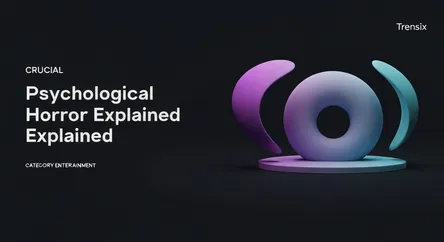Entertainment
Psychological Horror Explained

Explore the unsettling world of psychological horror, a movie genre that preys on mental and emotional fears rather than relying on gore or jump scares.
What is it?
Psychological horror is a subgenre of horror that focuses on the mental and emotional states of its characters to generate suspense, dread, and terror. Unlike traditional horror that often relies on physical threats, monsters, or gore (slasher films), this genre's scares are rooted in the mind. It plays on common psychological fears, such as paranoia, distrust of one's own perceptions, and the fragility of the human psyche. Key elements include unreliable narrators, ambiguous plotlines, and a pervasive, unsettling atmosphere. Classic examples include The Shining and Silence of the Lambs, while modern films like Get Out and Hereditary continue to define the genre.
Why is it trending?
The genre is experiencing a surge in popularity due to a growing audience appetite for more sophisticated, thought-provoking horror. Filmmakers like Ari Aster and Jordan Peele have elevated psychological horror into critically acclaimed art, proving it can be both commercially successful and intellectually stimulating. These films often tap into contemporary societal anxieties, from social paranoia to generational trauma, making them feel incredibly relevant. The slow-burn tension and lingering sense of unease provide a different kind of thrill that stays with viewers long after the movie ends, encouraging discussion and analysis.
How does it affect people?
Psychological horror affects audiences on a deeper, more personal level than other horror subgenres. By grounding the fear in relatable human emotions and vulnerabilities, it makes the terror feel more plausible and inescapable. Instead of a fleeting jump scare, it cultivates a lasting sense of dread that can challenge a viewer's sense of security and reality. The horror isn't just on the screen; it's in the implications of what's happening to the characters' minds. This can lead to a more profound and introspective experience, forcing audiences to confront uncomfortable questions about their own fears and the nature of reality.